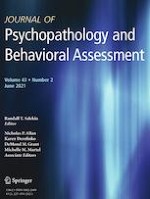05-01-2021
Computer-Based Testing to Shorten the Social Communication Questionnaire (SCQ): a Proof- of-Principle Study of the Lifetime and Current Forms
Gepubliceerd in: Journal of Psychopathology and Behavioral Assessment | Uitgave 2/2021
Log in om toegang te krijgenAbstract
The Social Communication Questionnaire (SCQ) is a 40-item instrument designed to screen children at risk for Autism Spectrum Disorder (ASD). Both Lifetime and Current forms of the scale are available. Although these forms are manageable for many respondents, their use may result in substantial respondent and administrative burden, particularly among individuals who have difficulty reading, have physical illness, and/or are asked to take multiple questionnaires. The objective of this research was to examine the potential of two stopping rules for computer-based testing (namely, curtailment and stochastic curtailment) to shorten the SCQ without compromising its screening properties. A retrospective analysis was conducted using data from the National Database for Autism Research (NDAR); responses regarding 1236 at-risk individuals from the SCQ Lifetime and 709 at-risk individuals from the SCQ Current were analyzed. In post-hoc simulation, curtailment reduced mean test lengths by 29% to 44% compared to the full-length Lifetime form, and by 25% to 39% compared to the full-length Current form, while providing the same screening result as the corresponding full-length form in 100% of cases. Stochastic curtailment made further reductions in test length, but was not always concordant with the full-length form’s screening result. These findings suggest that curtailment has potential to improve the efficiency of the SCQ in computer-based administrations and should be tested prospectively.
